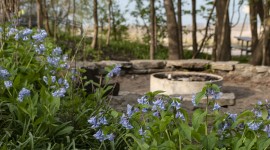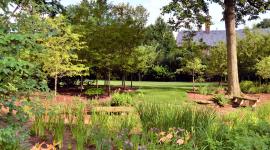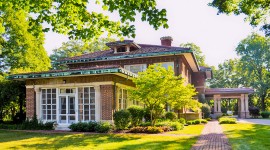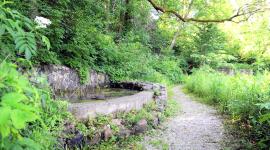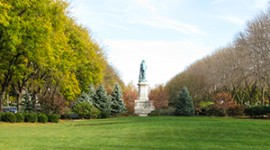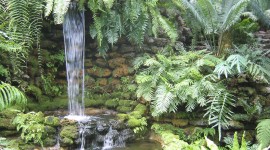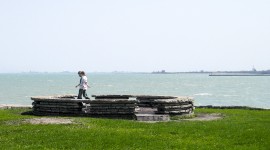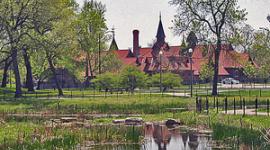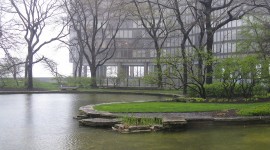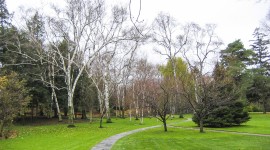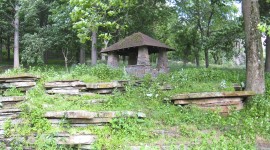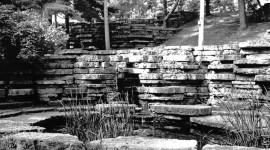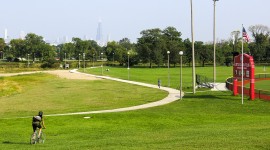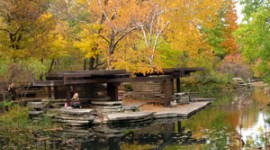Prairie Style
Developed in the late-nineteenth and early-twentieth century, this regional approach to landscape design celebrated the open character, horizontal expanse, and native vegetation of the Midwest. Landscape spaces were organized as a sequence of outdoor rooms and views, emphasizing the interaction of sky and landscape. Horizontally branched native trees and shrubs, such as hawthorn, were repeated around the edges of outdoor rooms, framing broad expansive views or more focused long views. Water features emulated natural streams, lakes and wetlands of the region, including layered limestone imitating natural rock outcroppings or the native glacial ridges of the region. At the detail level, it relied on light and shadow, repetition, and horizontal elements to create spaces that evoked the unique character of the Midwest. Walls, fieldstone paths, bridges, overlooks, and council rings often were built of horizontally detailed native limestone. The “Prairie Style” was first described in 1915 by Wilhelm Miller in The Prairie Spirit in Landscape Gardening and featured in the work of O. C. Simonds, Jens Jensen, and Alfred Caldwell.



